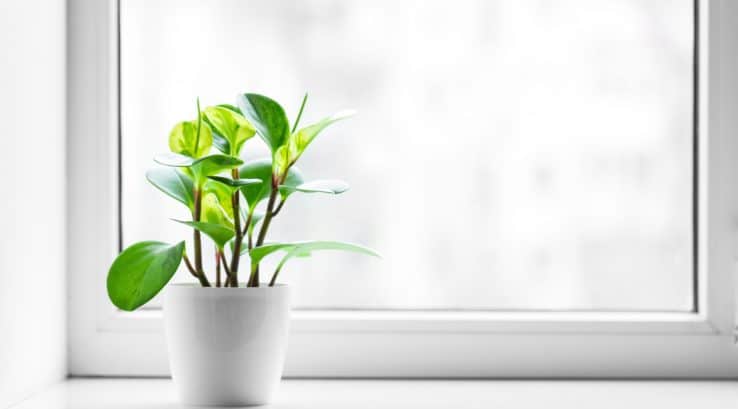How many plants do you have in your home? Some flowers in your garden, a small Succulent on your desk, or even that potted plant in your window that survives despite being under watered for the past 4 years, we are surrounded by plants in and around our homes. Despite this, most are completely unaware of some of the amazing things that plants can do. Most are aware that plants convert carbon dioxide to oxygen, allowing the rest of life on earth to thrive, but some are capable of actions that we usually reserve for other forms of life like animals, and so much more. Plants are capable of so much, ranging from being able to move in ways similar to animals and microbes, to being able to detoxify soils through large scale decontamination projects.
https://www.thompsoncreek.com/blog/best-windows-for-plants/
Nastic and Tropic Movements
Many plants are able to go through one of several processes that allow them to perform some sort of movement. These movements are separated into two categories, nastic and tropic movements. The more common of these two is tropic movements. These movements are caused by asymmetric cell expansion and happen for a variety of reasons. One of the most common causes for tropic movement is light. As light shines on one side of a plant more so than another, the cells on the side getting less light expand, causing the plant to tilt itself towards the higher concentration of light. This mechanism leads to permanent changes to the plant, as it is unable to simply return to its old form.
https://www.jagranjosh.com/general-knowledge/what-is-nastic-movement-in-plants-1516350600-1

The other form of plant movement is known as Nastic movement, and unlike tropisms it is a fast and temporary movement. One of the best examples of a nastic movement is seen in the well known Venus Flytrap. Nastic movements utilize water pressure in order to achieve quick movements. As the plant is stimulated by an outside source, water rushes to the site of movement, causing the plant to (usually) close in a way. We see this effect in the Venus flytrap, when an insect brushes against the hair like follicles, the water rushes into the "mouth" of the plant, causing it to close and trap the insect.
https://www.sciencefocus.com/nature/how-do-venus-flytraps-know-when-to-shut/
Phytoremediation
Another interesting capability of many plants is known as Hyper-accumulation. This term describes the ability of plants to uptake different material from the environment, be it essential nutrients, salts, or biochemical waste. These processes vary from species to species, both in what is taken in by the plant and the efficiency of the process. Some plants that are capable of very efficient uptake of certain materials are able to be used in a newer field known as Phytoremediation. Phytoremediation is the purposeful introduction of a plant to a polluted area of the world in order to remove toxins from the location that we are otherwise unable to clean. A good example of a strong remediator is the Willow Tree, which has been seen to be a strong hyper-accumulator of oils and other toxins, and studies are being one to see their efficiency in areas of the world such as war torn local, and even Chernobyl.
https://www.xdd-llc.com/phytoremediation-technologies/

Closing
Overall, plants are much more amazing than most people give them credit for. They aren't just an object on your table whose color brings the room together. Plants are amazing living creatures capable of movement, and also able to help us in places where we need it most. In a lot of places the world is polluted by years of neglect, but maybe, through phytoremediation, we can successfully combat our mistakes.
Additional Resources
https://www.sciencedirect.com/topics/agricultural-and-biological-sciences/nastic-movements
https://academicjournals.org/article/article1380805605_Milan%20et%20al.pdf

This article teaches me a lot about how plants behave and how plants help to protect the environment. Plants are irreplaceable members of the environment. They can help us to protect the environment and provide resources to nature. We cannot treat plants as decoration. We must protect plants to make our planet's environment better and better.
ReplyDeleteThat is a very good takeaway, plants are necessary for our survival! I also hope you could get a sense of appreciation for plants, at least more so than you had prior.
DeleteThis article tells us that plants in and around our homes not only convert carbon dioxide to oxygen, but some plants also interact with other life. The subtitle of this post clearly tells me the structure of this post.
ReplyDeleteMost definitely, plants are more than just glorified oxygen machines, but entire living things like us with their own functions that people should be aware of.
DeleteNice job with this blog! It was very insightful. Reminds me of a funny quote: "if you ever feel useless, just remember you breathe out carbon dioxide for plants." I didn't know much about phytoremediation nor the movements, so I not only enjoyed reading this blog, but also learned a lot!
ReplyDeleteReading this article reminded me why I got so into biology in high school. Something like a plant that we think is so simple turns out to be very complicated. All of the different types of tropisms that the plant goes through I find the most interesting. How they are able to bend towards light and how the roots know how to always grow down always interested me the most because we don't initially think that plants are able to do things like this.
ReplyDelete